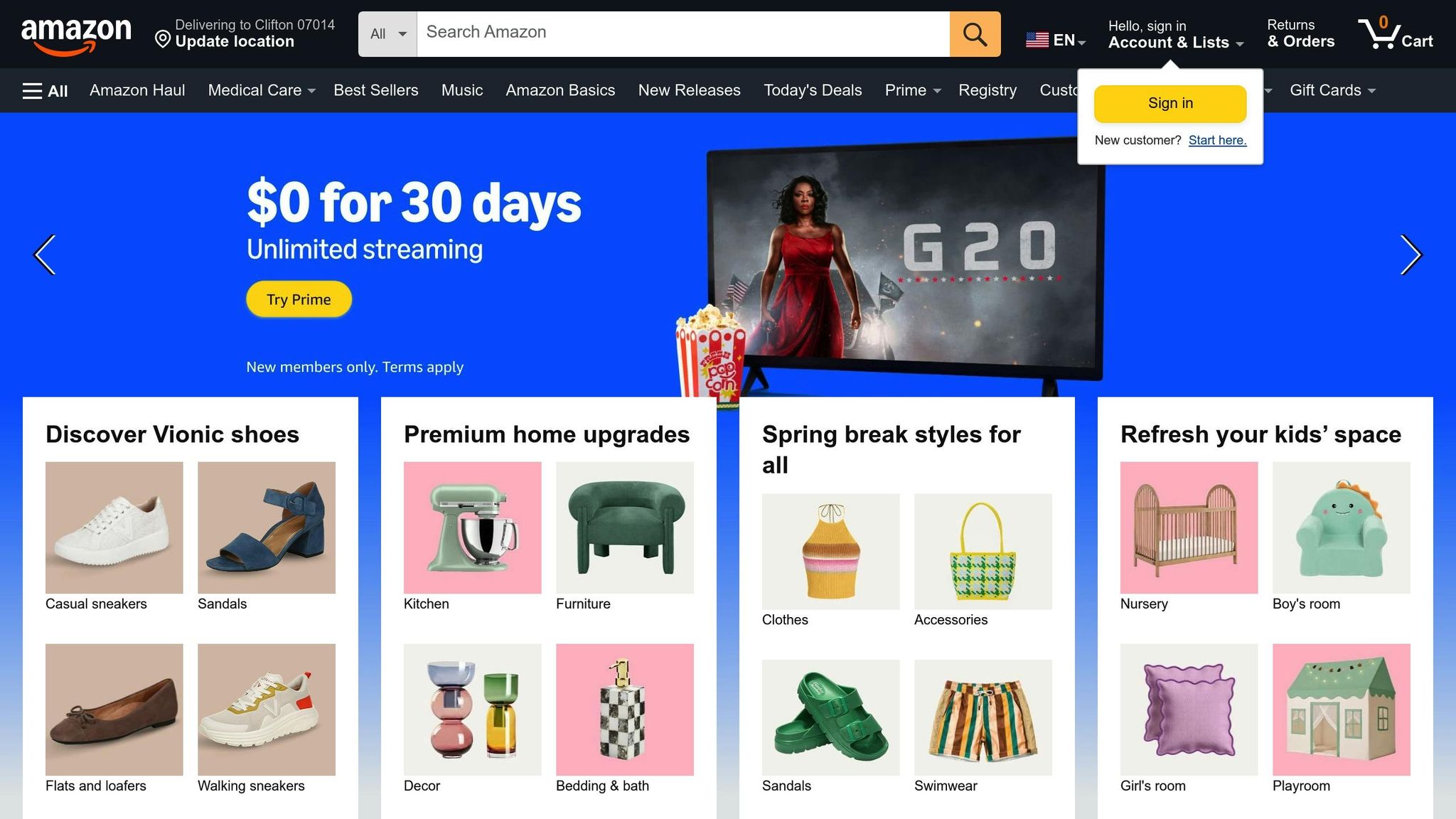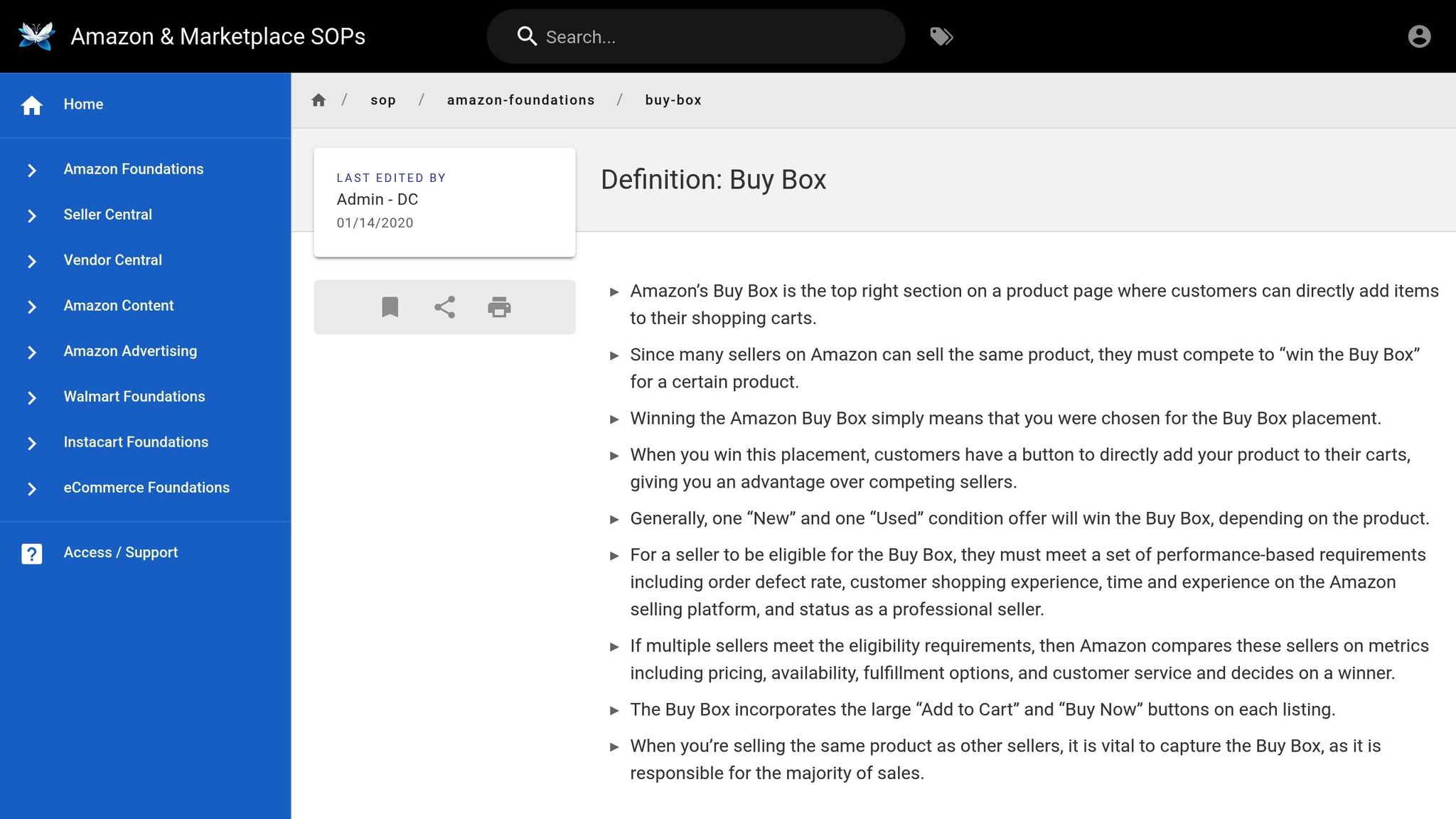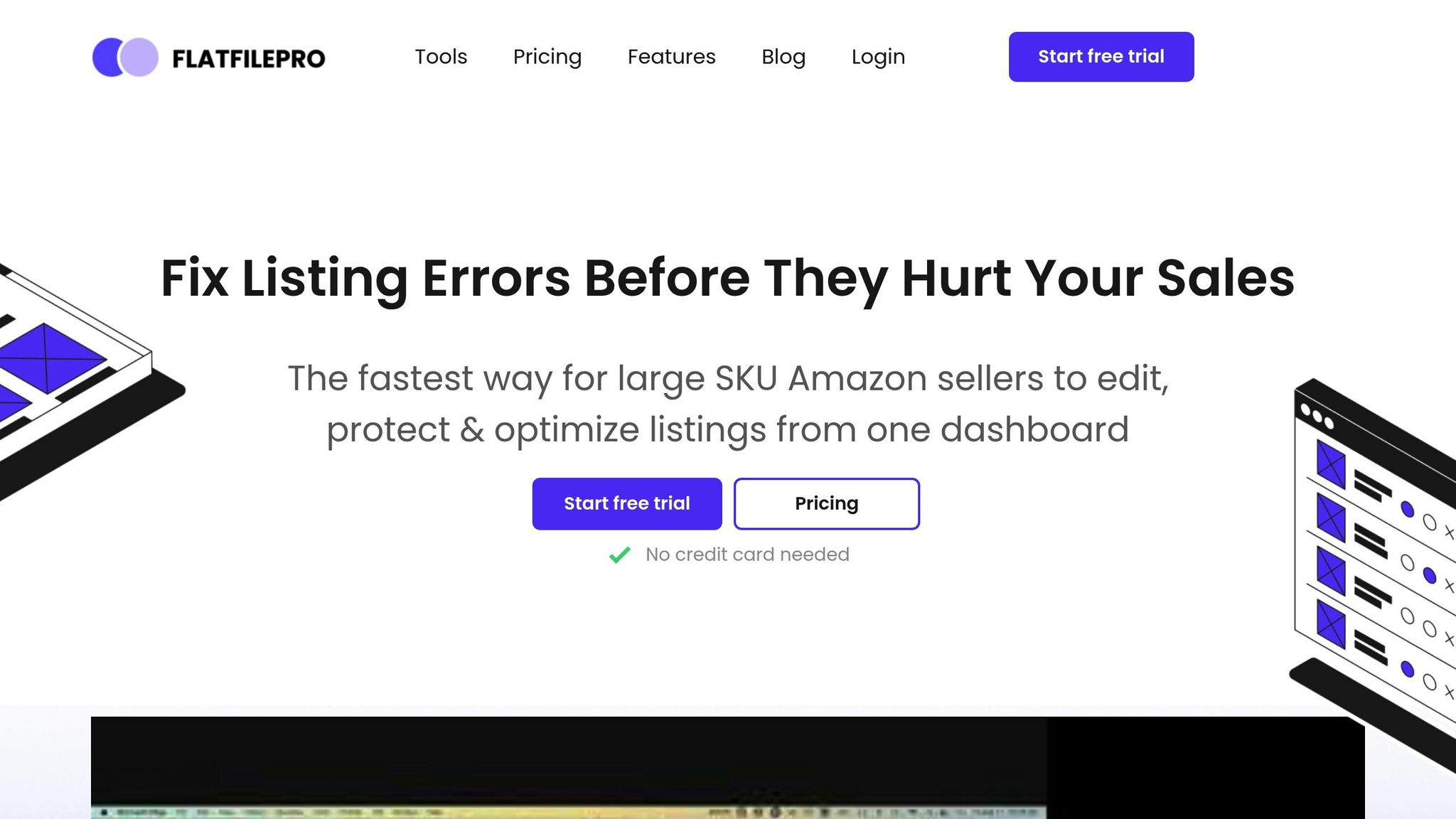Amazon‘s dynamic pricing system adjusts product prices in real time based on factors like demand, competitor prices, and customer behavior. This helps sellers stay competitive, win the Buy Box, and maintain profits without manual effort. Here’s what you need to know:
- What It Does: Automatically updates prices based on market trends, historical data, and inventory levels.
- Why It Matters: Boosts sales, saves time, and keeps prices competitive.
- Tools Available: Amazon’s Automate Pricing tool and third-party solutions like FlatFilePro simplify price management with rule-based automation.
Dynamic pricing is essential for Amazon sellers to adapt quickly to market changes and maximize profitability. Keep reading to learn how it works, the tools involved, and tips for managing it effectively.
Automate Pricing Create and apply a customized or catalog …
Dynamic Pricing System on Amazon
Amazon’s dynamic pricing system helps sellers stay competitive while maximizing profits. Here’s a closer look at the algorithms and tools that drive these price adjustments.
Price Adjustment Algorithms
Amazon relies on advanced algorithms to fine-tune prices by analyzing several key factors:
- Real-time market analysis: Tracks competitor prices, market trends, and demand fluctuations.
- Historical data: Examines past sales and seasonal patterns to predict future performance.
- Customer behavior: Observes shopping habits and purchase trends.
- Inventory levels: Considers stock availability and associated costs.
- Profit margin calculations: Strikes a balance between competitive pricing and profitability.
These algorithms operate continuously, keeping prices aligned with changing market conditions.
Amazon’s Automate Pricing Tool
The Automate Pricing tool on Amazon simplifies price management with rule-based strategies. It allows sellers to:
- Set minimum and maximum price limits to protect margins.
- Automate price adjustments based on competitor activity.
- Create specific triggers that activate price changes.
Here are some common pricing rule options:
| Rule Type | Description | Best Used For |
|---|---|---|
| Competitive Price | Matches or beats the lowest competitor price | High-competition items |
| Price Below Competitor | Keeps prices lower than selected competitors | Market penetration |
| External Price | Aligns prices with other marketplaces | Multi-channel consistency |
| Based on Sales Units | Adjusts prices based on sales speed | Inventory management |
Regularly updating these rules ensures your pricing remains effective and competitive.
Price Change Factors
Amazon’s pricing system is constantly updated to reflect changes in the market. Factors like supply and demand, competitor strategies, and customer behavior all play a role in determining real-time prices.
Supply and Demand
Several things influence pricing:
- Low stock levels can lead to higher prices to avoid running out of inventory.
- Prices often rise during busy shopping seasons or major sales events.
- New products are typically priced higher at launch, with adjustments made over time.
For instance, in electronics, prices often fluctuate as inventory levels and market demand shift.
Competitor Prices and Buy Box
Pricing competition for the Buy Box is a major influence. Amazon’s system keeps a close eye on competitor pricing. To win or maintain the Buy Box, sellers might:
- Set prices slightly lower than competitors.
- Keep rates competitive to hold their position.
- Lower prices if competitors undercut them.
This real-time pricing strategy helps sellers stay competitive in a fast-changing market.
Customer Shopping Patterns
Customer behavior also plays a role in pricing adjustments. The system considers:
- Time trends: Adjusting prices during high-traffic periods.
- Engagement data: Using view-to-purchase rates to guide price changes.
- Behavioral cues: Reducing prices when frequent cart abandonment is detected to encourage purchases.
sbb-itb-ed4fa17
Pros and Cons of Dynamic Pricing
Dynamic pricing on Amazon can be a double-edged sword for sellers. While it offers significant opportunities to grow revenue and stay competitive, it also comes with challenges that require careful management. Here’s a closer look at the benefits and drawbacks.
Advantages for Sellers
Dynamic pricing can improve your business in several ways:
- Boosts Sales and Revenue: Automated pricing adjusts to demand surges, helping you sell more while managing inventory effectively.
- Stays Competitive: Real-time price updates keep you in the game for the Buy Box and help you respond quickly to competitors.
- Saves Time: Automation reduces the need for manual price tracking and allows for data-driven decisions, even when you’re not actively monitoring.
Common Problems
However, dynamic pricing isn’t without its issues:
- Price Wars: Automated systems can lead to aggressive price cuts, reducing your profit margins.
- Customer Confusion: Frequent price changes may irritate buyers or harm your brand’s reputation.
- Technical Hurdles: Setting up and maintaining dynamic pricing tools can be complex, and errors during busy times can hurt your business.
How to Manage These Challenges
To make the most of dynamic pricing while minimizing risks, consider these tips:
- Use automated tools to adjust prices based on real-time market conditions.
- Regularly monitor competitors and study buyer behavior to stay informed.
- Maintain accurate product listings with reliable management tools.
- Limit access to pricing settings to avoid inconsistencies or errors.
Managing Dynamic Pricing
Managing dynamic pricing on Amazon requires reliable, automated tools to maintain competitiveness and profitability. Here’s a look at essential automation options and how FlatFilePro simplifies the process.
Price Automation Tools
Real-Time Monitoring
Stay ahead by keeping tabs on:
- Competitor pricing
- Buy Box status
- Inventory levels
- Sales velocity trends
Rule-Based Pricing
Automation works best when guided by clear rules. Key considerations include:
- Setting minimum and maximum price limits
- Ensuring profit margins are met
- Adjusting prices based on competitor activity
- Implementing time-sensitive pricing changes
FlatFilePro‘s Pricing Features
FlatFilePro stands out among automation tools, offering Amazon sellers practical solutions to manage dynamic pricing efficiently. Its features make adapting to market changes seamless.
Bulk Editing Made Simple
FlatFilePro lets sellers update prices across multiple listings at once, saving time during promotions or market shifts.
"Nifty bit of kit. Love that it saves all the changes my team makes across listings" [1]
Version Control for Safety
The platform’s version tracking system ensures:
- A full history of price changes
- Easy reversion to previous prices
- An audit trail for all updates
- Protection against accidental changes
Access Control to Prevent Errors
To maintain pricing consistency and accuracy:
- Limit pricing permissions to specific team members
- Track who made changes
- Use approval workflows for updates
- Keep a documented pricing history
"With FlatFilePro, I’ve been able to streamline my Amazon listing process significantly. What used to take hours now takes just minutes. It’s a game-changer for my business" [2]
FlatFilePro’s Reflection Engine ensures every pricing change is recorded and documented, giving sellers full visibility to refine their strategies over time.
| Feature | Benefit |
|---|---|
| Bulk Price Updates | Update multiple listings simultaneously |
| Version Control | Track and revert pricing changes |
| Access Management | Control who can modify prices |
| Change History | Monitor all pricing adjustments |
| Error Prevention | Validate price changes before publishing |
Summary
Dynamic pricing on Amazon requires sellers to balance competitive pricing with profit protection. Amazon’s system relies on advanced algorithms to analyze factors like market demand, competitor actions, and customer behavior, ensuring prices adjust effectively.
Key Factors Affecting Pricing
| Factor | Influence on Pricing |
|---|---|
| Market Demand | Shapes the balance between supply and demand |
| Competitor Activity | Impacts Buy Box eligibility and overall positioning |
| Customer Behavior | Triggers price changes based on shopping patterns |
To stay ahead, sellers should use automation tools like FlatFilePro. This tool simplifies listing updates, reduces pricing mistakes, and includes version control for safer price testing. Its user access controls also help avoid costly errors.
Best Practices for Pricing Management
- Monitor competitor prices and market trends regularly
- Use automated tools to adjust prices based on set rules
- Keep your product listings accurate to align with your pricing strategy
- Continually review and refine pricing to improve performance




